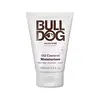What's inside
What's inside
 Key Ingredients
Key Ingredients

 Benefits
Benefits

 Concerns
Concerns

 Ingredients Side-by-side
Ingredients Side-by-side

Water
Skin ConditioningC12-15 Alkyl Benzoate
AntimicrobialTapioca Starch
Glycerin
HumectantSorbitan Stearate
EmulsifyingHamamelis Virginiana Water
AstringentSodium Polyacrylate
AbsorbentPentaerythrityl Distearate
EmulsifyingPhenoxyethanol
PreservativeSodium Stearoyl Glutamate
CleansingAlcohol
AntimicrobialCarbomer
Emulsion StabilisingBenzoic Acid
MaskingParfum
MaskingTocopheryl Acetate
AntioxidantDehydroacetic Acid
PreservativeSodium Hydroxide
BufferingSalix Alba Bark Extract
AstringentLimonene
PerfumingLinalool
PerfumingJuniperus Communis Fruit Extract
PerfumingPotassium Sorbate
PreservativeSodium Benzoate
MaskingWater, C12-15 Alkyl Benzoate, Tapioca Starch, Glycerin, Sorbitan Stearate, Hamamelis Virginiana Water, Sodium Polyacrylate, Pentaerythrityl Distearate, Phenoxyethanol, Sodium Stearoyl Glutamate, Alcohol, Carbomer, Benzoic Acid, Parfum, Tocopheryl Acetate, Dehydroacetic Acid, Sodium Hydroxide, Salix Alba Bark Extract, Limonene, Linalool, Juniperus Communis Fruit Extract, Potassium Sorbate, Sodium Benzoate
Water
Skin ConditioningButylene Glycol
HumectantGlycerin
HumectantHydrogenated Polyisobutene
EmollientC15-19 Alkane
SolventAluminum Starch Octenylsuccinate
AbsorbentPolyacrylamide
Phenoxyethanol
PreservativeHydrogenated Poly(C6-14 Olefin)
EmollientC13-14 Isoparaffin
EmollientIsomalt
HumectantCaprylyl Glycol
EmollientCarbomer
Emulsion StabilisingSodium Hydroxide
BufferingSodium Hyaluronate
HumectantLaureth-7
EmulsifyingDisodium EDTA
Tocopheryl Acetate
AntioxidantNymphaea Alba Flower Extract
Skin ConditioningLecithin
EmollientLauroyl Lysine
Skin Conditioning1,2-Hexanediol
Skin ConditioningAcetyl Glutamine
Skin ConditioningBacillus/Folic Acid Ferment Filtrate Extract
AntioxidantSh-Oligopeptide-1
Skin ConditioningSh-Oligopeptide-2
Skin ConditioningSh-Polypeptide-1
Skin ConditioningSh-Polypeptide-11
Sh-Polypeptide-9
Skin ConditioningSymphytum Officinale Callus Culture Extract
Skin ConditioningSodium Benzoate
MaskingLactic Acid/Glycolic Acid Copolymer
Skin ConditioningPolyvinyl Alcohol
Copper Palmitoyl Heptapeptide-14
Skin ConditioningHeptapeptide-15 Palmitate
Skin ConditioningWater, Butylene Glycol, Glycerin, Hydrogenated Polyisobutene, C15-19 Alkane, Aluminum Starch Octenylsuccinate, Polyacrylamide, Phenoxyethanol, Hydrogenated Poly(C6-14 Olefin), C13-14 Isoparaffin, Isomalt, Caprylyl Glycol, Carbomer, Sodium Hydroxide, Sodium Hyaluronate, Laureth-7, Disodium EDTA, Tocopheryl Acetate, Nymphaea Alba Flower Extract, Lecithin, Lauroyl Lysine, 1,2-Hexanediol, Acetyl Glutamine, Bacillus/Folic Acid Ferment Filtrate Extract, Sh-Oligopeptide-1, Sh-Oligopeptide-2, Sh-Polypeptide-1, Sh-Polypeptide-11, Sh-Polypeptide-9, Symphytum Officinale Callus Culture Extract, Sodium Benzoate, Lactic Acid/Glycolic Acid Copolymer, Polyvinyl Alcohol, Copper Palmitoyl Heptapeptide-14, Heptapeptide-15 Palmitate
Ingredients Explained
These ingredients are found in both products.
Ingredients higher up in an ingredient list are typically present in a larger amount.
Carbomer is a polymer of acrylic acid. Its main role is to create a gel consistency.
A high amount of carbomer can cause pilling or balling up of products. Don't worry, most products contain 1% or less of carbomer.
Glycerin is already naturally found in your skin. It helps moisturize and protect your skin.
A study from 2016 found glycerin to be more effective as a humectant than AHAs and hyaluronic acid.
As a humectant, it helps the skin stay hydrated by pulling moisture to your skin. The low molecular weight of glycerin allows it to pull moisture into the deeper layers of your skin.
Hydrated skin improves your skin barrier; Your skin barrier helps protect against irritants and bacteria.
Glycerin has also been found to have antimicrobial and antiviral properties. Due to these properties, glycerin is often used in wound and burn treatments.
In cosmetics, glycerin is usually derived from plants such as soybean or palm. However, it can also be sourced from animals, such as tallow or animal fat.
This ingredient is organic, colorless, odorless, and non-toxic.
Glycerin is the name for this ingredient in American English. British English uses Glycerol/Glycerine.
Learn more about GlycerinPhenoxyethanol is a preservative that has germicide, antimicrobial, and aromatic properties. Studies show that phenoxyethanol can prevent microbial growth. By itself, it has a scent that is similar to that of a rose.
It's often used in formulations along with Caprylyl Glycol to preserve the shelf life of products.
Sodium Benzoate is a preservative. It's used in both cosmetic and food products to inhibit the growth of mold and bacteria. It is typically produced synthetically.
Both the US FDA and EU Health Committee have approved the use of sodium benzoate. In the US, levels of 0.1% (of the total product) are allowed.
Sodium benzoate works as a preservative by inhibiting the growth of bacteria inside of cells. It prevents the cell from fermenting a type of sugar using an enzyme called phosphofructokinase.
It is the salt of benzoic acid. Foods containing sodium benzoate include soda, salad dressings, condiments, fruit juices, wines, and snack foods.
Studies for using ascorbic acid and sodium benzoate in cosmetics are lacking, especially in skincare routines with multiple steps.
We always recommend speaking with a professional, such as a dermatologist, if you have any concerns.
Learn more about Sodium BenzoateSodium Hydroxide is also known as lye or caustic soda. It is used to adjust the pH of products; many ingredients require a specific pH to be effective.
In small amounts, sodium hydroxide is considered safe to use. However, large amounts may cause chemical burns due to its high alkaline.
Your skin has a natural pH and acid mantle. This acid mantle helps prevent harmful bacteria from breaking through. The acid mantle also helps keep your skin hydrated.
"Alkaline" refers to a high pH level. A low pH level would be considered acidic.
Learn more about Sodium HydroxideTocopheryl Acetate is AKA Vitamin E. It is an antioxidant and protects your skin from free radicals. Free radicals damage the skin by breaking down collagen.
One study found using Tocopheryl Acetate with Vitamin C decreased the number of sunburned cells.
Tocopheryl Acetate is commonly found in both skincare and dietary supplements.
Learn more about Tocopheryl AcetateWater. It's the most common cosmetic ingredient of all. You'll usually see it at the top of ingredient lists, meaning that it makes up the largest part of the product.
So why is it so popular? Water most often acts as a solvent - this means that it helps dissolve other ingredients into the formulation.
You'll also recognize water as that liquid we all need to stay alive. If you see this, drink a glass of water. Stay hydrated!
Learn more about Water